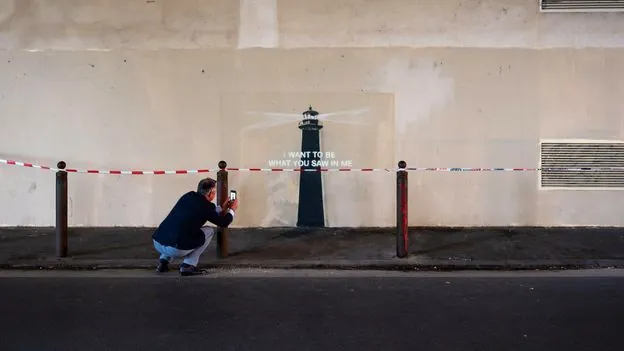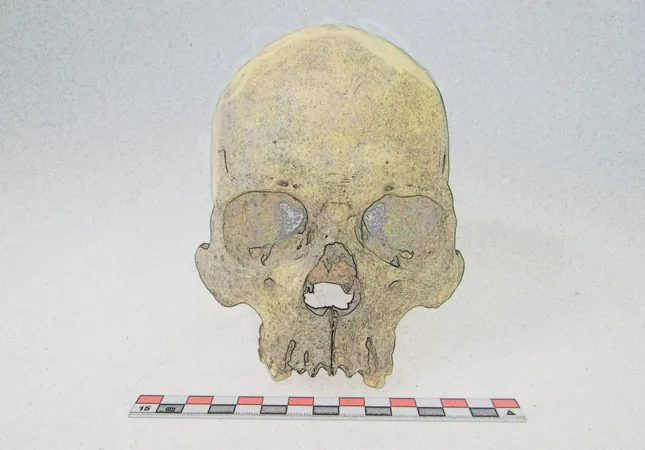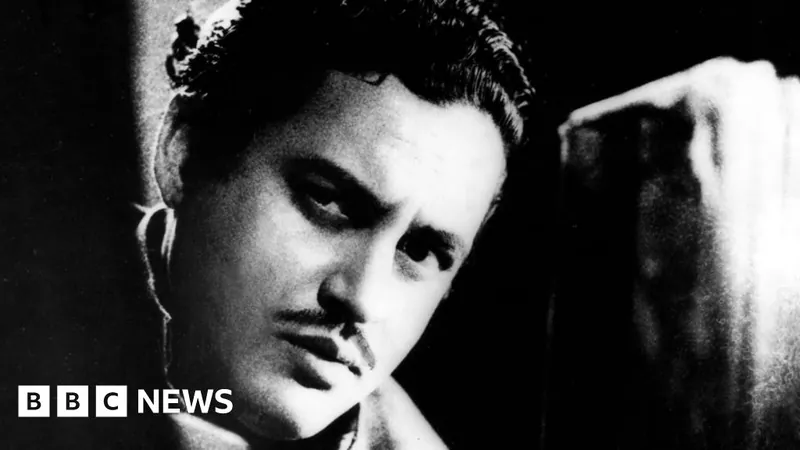
Unlocking the Philosophy Behind Banksy's Art: Five Works That Challenge Our Perceptions
2025-06-02
Author: Jacques
Banksy's latest mural in Marseille isn't just another striking street art piece—it's a thought-provoking exploration of identity and existence. This new artwork prompts us to consider: which version of ourselves is the real one: the person we are now or the one we aspire to be?
For over three decades, Banksy has woven intricate philosophical themes into his artwork, often referencing philosophical giants from Plato to Foucault. Known for his audacious style, Banksy's work confronts the viewer with complex existential dilemmas.
A New Work to Ponder: The Marseille Mural
Unveiled on May 29, Banksy's latest mural—discovered in the bustling port city of Marseille—features a stark silhouette of a lighthouse against a bland urban wall, complete with a rusting street bollard. The accompanying phrase 'I want to be what you saw in me' pushes viewers to reconsider perceptions of reality. This thought rekindles Plato's Allegory of the Cave, flipping it to highlight that sometimes, shadows (or aspirations) may hold more truth than the objects casting them.
The Philosophy of 'Girl with Balloon'
Take, for instance, 'Girl with Balloon,' originally appearing in London in 2002. The haunting image of a child reaching for a heart-shaped balloon embodies the philosophy of hope amid the pursuit of the unattainable. Here, Banksy channels Schopenhauer’s idea of an insatiable 'Will'—the very force propelling humanity forward, a sentiment he playfully subverted in 2018 by shredding a framed version at auction, humorously demonstrating the futility of desire.
A Subversion of Nonviolence in 'Flower Thrower'
In another iconic piece, 'Flower Thrower' from 2003, Banksy depicts a masked figure ready to hurl flowers rather than violence—an apparent nod to Gandhi’s principles of nonviolence. Yet, by presenting this character in a riotous stance, Banksy challenges the notion of peaceful protest, suggesting that even beauty can be a weapon.
Surveillance and Society: 'One Nation Under CCTV'
In 'One Nation Under CCTV,' from 2007, Banksy employed a similar engaging technique to criticize modern surveillance culture. A young boy is shown graffitiing the poignant statement while being monitored by a police officer and a CCTV camera. Echoing Michel Foucault’s theories about the omnipotent gaze of the state, Banksy’s mural exposes the layers of societal control that ensnare us all.
Disconnected Relationships in 'Mobile Lovers'
Lastly, consider 'Mobile Lovers' from 2014, which critiques contemporary relationships fracturing under the influence of technology. The mural encapsulates a couple's embrace—yet their attention is consumed by smartphones, illustrating Simone de Beauvoir’s warnings about detachment. Her insights from 'The Ethics of Ambiguity' resonate in our world dominated by digital interactions that often overshadow genuine human connections.
Through these potent artworks, Banksy not only captivates our eyes but also invites us to reflect deeply on enduring philosophical questions. Each piece serves as a mirror, prompting us to consider our realities, relationships, and the very essence of existence.









 Brasil (PT)
Brasil (PT)
 Canada (EN)
Canada (EN)
 Chile (ES)
Chile (ES)
 Česko (CS)
Česko (CS)
 대한민국 (KO)
대한민국 (KO)
 España (ES)
España (ES)
 France (FR)
France (FR)
 Hong Kong (EN)
Hong Kong (EN)
 Italia (IT)
Italia (IT)
 日本 (JA)
日本 (JA)
 Magyarország (HU)
Magyarország (HU)
 Norge (NO)
Norge (NO)
 Polska (PL)
Polska (PL)
 Schweiz (DE)
Schweiz (DE)
 Singapore (EN)
Singapore (EN)
 Sverige (SV)
Sverige (SV)
 Suomi (FI)
Suomi (FI)
 Türkiye (TR)
Türkiye (TR)
 الإمارات العربية المتحدة (AR)
الإمارات العربية المتحدة (AR)